3375-F Capital Circle NE, Tallahassee, Florida 32308 P: (850) 877-1692
Orthodontic Appliances
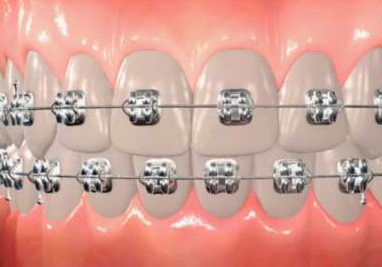
Archwire
A metal wire which is attached to your brackets to move your teeth.
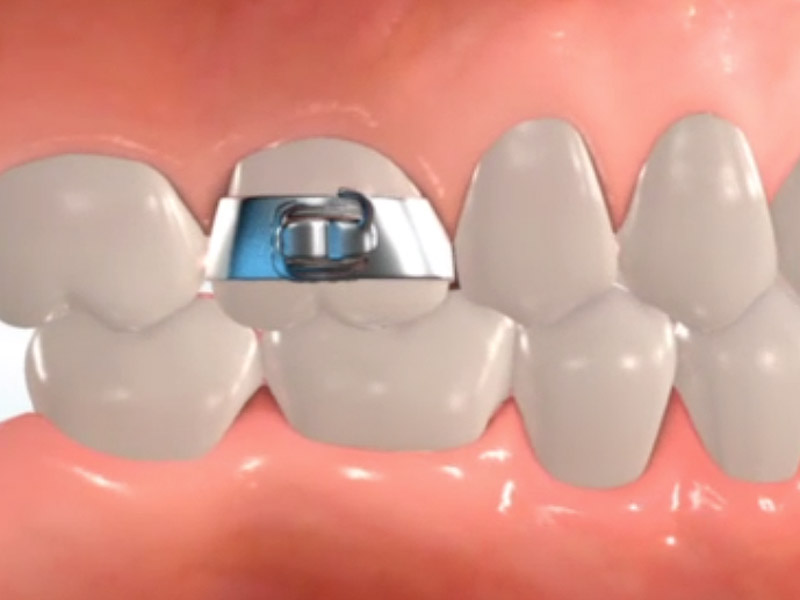
Bands
Bands are a ring of metal, which fit around the molars and sometimes premolars. The bands are selected from a range of sizes in order to find the tightest fitting band. The bands are sealed in position using dental cement that contains fluoride to prevent any decalcification during treatment.
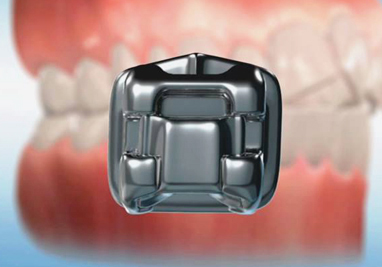
Brackets
Brackets are the small metal or ceramic modules attached to each tooth. They serve as guides to move the teeth and hold the archwire in place.
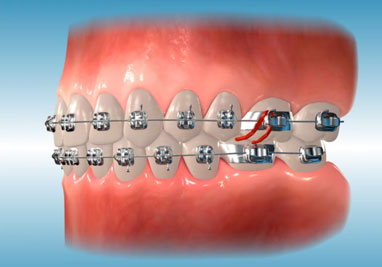
Buccal Tube
A small metal part that is welded on the outside of a molar band. The molar band contains slots to hold archwires, lip bumpers, facebows and other things your orthodontist uses to move your teeth.
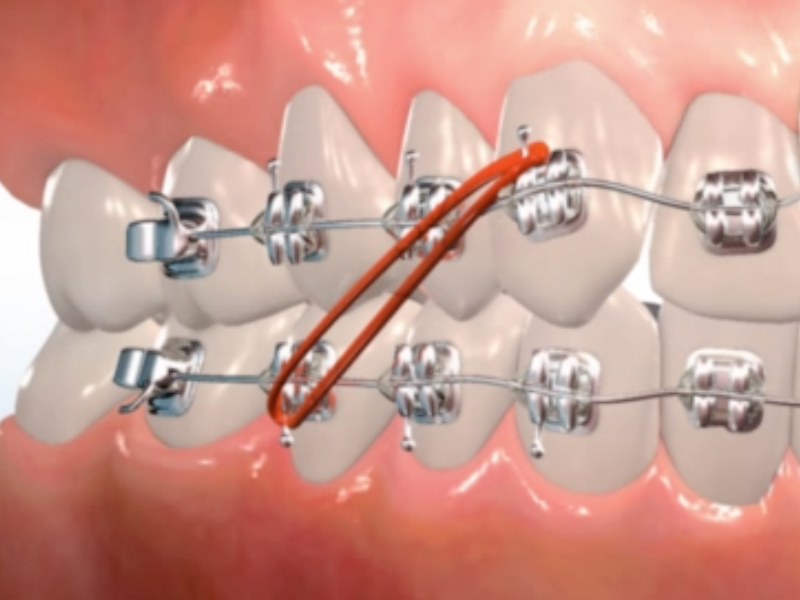
Elastics
Elastics or rubber bands for braces help move the upper and lower teeth relative to each other, ultimately achieving a better bite. The orthodontic rubber bands are typically effective for correcting overbites, underbites, or other types of alignments of the jaw. They are also useful for moving a tooth out of alignment or to close a space in the mouth.
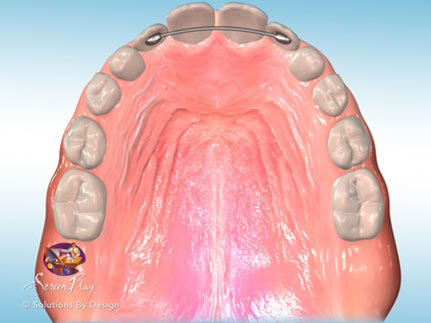
Fixed Retainer
Fixed retainers consist of a metal wire bonded to the back of the teeth. Fixed retainers can stay in place indefinitely.
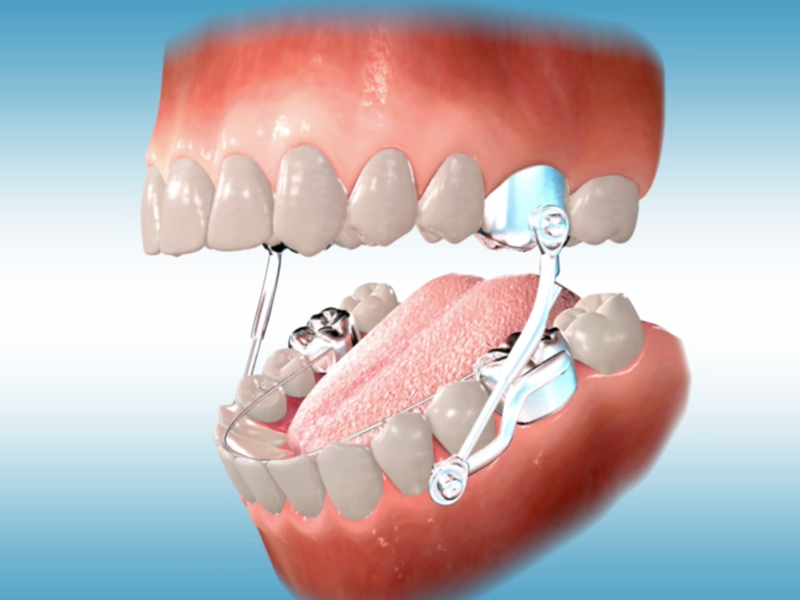
Herbst
The Herbst appliance is used to correct overbites due to lack of development of the lower jaw. It is cemented in place which eliminates cooperation. Simple braces cannot achieve this correction.
The appliance can be adjusted by the orthodontist to create the ideal position of the lower jaw to the upper teeth.

Mouthguard
A device that is used to protect your mouth from injury when you are participating in sports. The use of a mouthguard is especially important for orthodontic patients, to prevent injuries. Remember not to boil your mouthguard while in treatment. This can restrict the amount of movement your teeth can do or the mouthguard may only fit for a short amount of time due to the teeth moving.
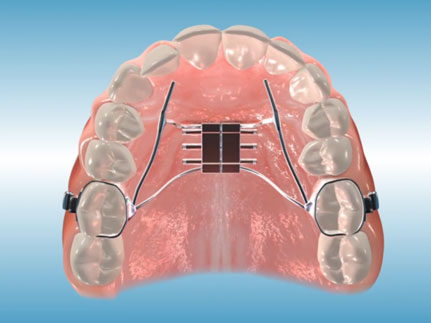
Palatal Expander
A palatal expander, or orthodontic expander, is used to widen the upper jaw so that the bottom and upper teeth will fit together better.
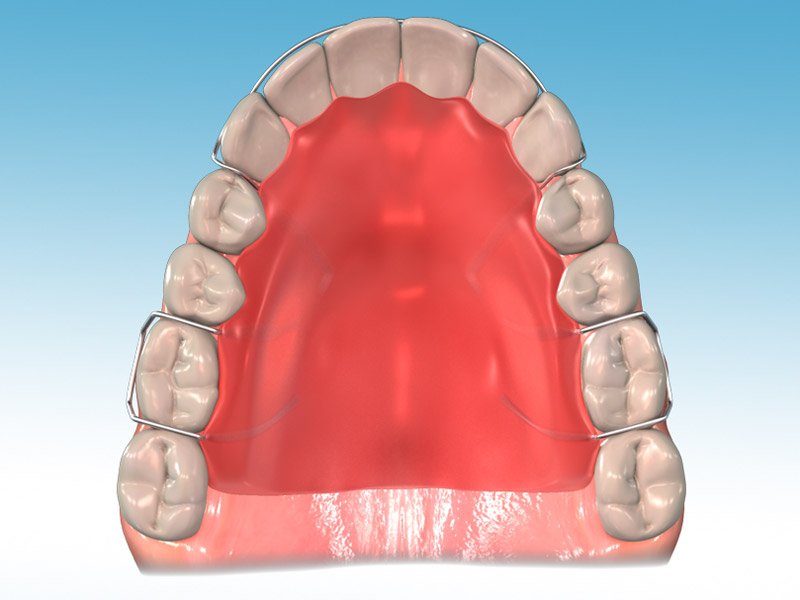
Removable Retainer
A gadget that the orthodontist gives you to wear after your braces are removed. The retainer attaches to your upper and / or lower teeth and holds them in the correct position while your jaw hardens and your teeth get strongly attached to your jaw. At first, you wear the retainer 24 hours a day, and then only at night.
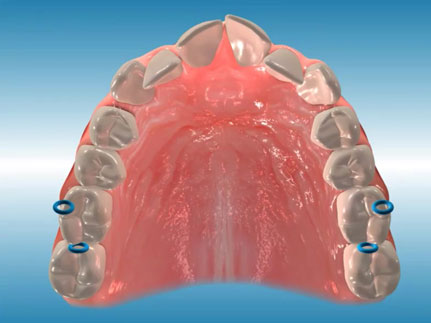
Separators
Separators are tiny rubber bands or springs that your orthodontist places between your back teeth. These separators prepare your mouth for braces by creating a small gap between these teeth. This space allows for the placement of a metal band around your molar, which anchors your braces in your mouth.
Archwire

A metal wire which is attached to your brackets to move your teeth.
Bands

Bands are a ring of metal, which fit around the molars and sometimes premolars. The bands are selected from a range of sizes in order to find the tightest fitting band. The bands are sealed in position using dental cement that contains fluoride to prevent any decalcification during treatment.
Brackets

Brackets are the small metal or ceramic modules attached to each tooth. They serve as guides to move the teeth and hold the archwire in place.
Buccal Tube

A small metal part that is welded on the outside of a molar band. The molar band contains slots to hold archwires, lip bumpers, facebows and other things your orthodontist uses to move your teeth.
Elastics

Elastics or rubber bands for braces help move the upper and lower teeth relative to each other, ultimately achieving a better bite. The orthodontic rubber bands are typically effective for correcting overbites, underbites, or other types of alignments of the jaw. They are also useful for moving a tooth out of alignment or to close a space in the mouth.
Fixed Retainer

Fixed retainers consist of a metal wire bonded to the back of the teeth. Fixed retainers can stay in place indefinitely.
Herbst

The Herbst appliance is used to correct overbites due to lack of development of the lower jaw. It is cemented in place which eliminates cooperation. Simple braces cannot achieve this correction.
The appliance can be adjusted by the orthodontist to create the ideal position of the lower jaw to the upper teeth.
Mouthguard

A device that is used to protect your mouth from injury when you are participating in sports. The use of a mouthguard is especially important for orthodontic patients, to prevent injuries. Remember not to boil your mouthguard while in treatment. This can restrict the amount of movement your teeth can do or the mouthguard may only fit for a short amount of time due to the teeth moving.
Palatal Expander

A palatal expander, or orthodontic expander, is used to widen the upper jaw so that the bottom and upper teeth will fit together better.
Removable Retainer

A gadget that the orthodontist gives you to wear after your braces are removed. The retainer attaches to your upper and / or lower teeth and holds them in the correct position while your jaw hardens and your teeth get strongly attached to your jaw. At first, you wear the retainer 24 hours a day, and then only at night.
Separators

Separators are tiny rubber bands or springs that your orthodontist places between your back teeth. These separators prepare your mouth for braces by creating a small gap between these teeth. This space allows for the placement of a metal band around your molar, which anchors your braces in your mouth.
Orthodontic Terms
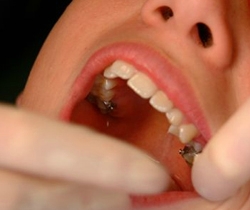
Banding
The process of fitting and cementing orthodontic bands to your teeth.

Bonding
The process of attaching brackets to your teeth using a special safe adhesive.
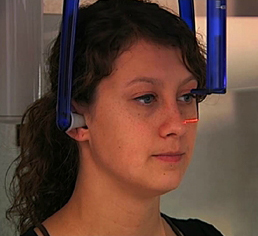
Cephalometric X-ray
An x-ray of the head that shows if your teeth are aligned and growing properly within the jaws.
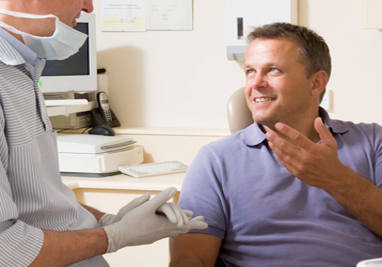
Consultation
A meeting with your orthodontist where your treatment plan is discussed.
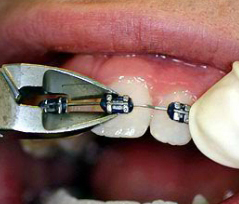
Debonding
The process of removing cemented orthodontic brackets from your teeth.
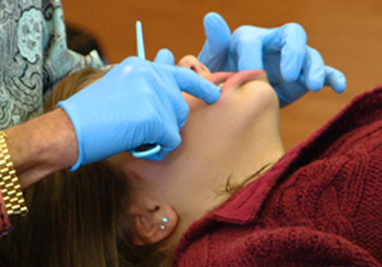
Emergencies
Emergencies do not occur very often, but if they do, our team will respond quickly. An emergency only happens when someone is involved in an accident with their braces that has caused trauma to the tooth or tissue or if there is a noticeable amount of swelling of the lips or tongue.
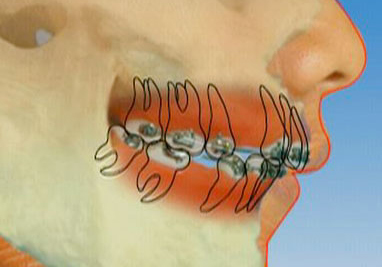
Extractions
Extractions of impacted or problematic teeth to make space for orthodontic treatment.
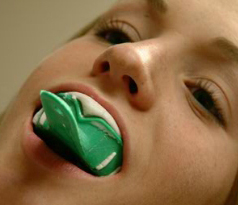
Impressions
The first step in making a model of your teeth. A container filled with a rubber-type material is placed into the mouth around your teeth. The material hardens to produce a mold of your teeth.
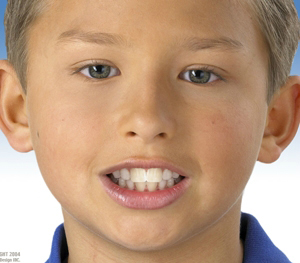
Interceptive Treatment
Orthodontic treatment that is usually done between the ages of 7 and 10. The objective of interceptive or early orthodontic treatment is to provide orthopedic intervention, so that later orthodontic treatment is less complex.
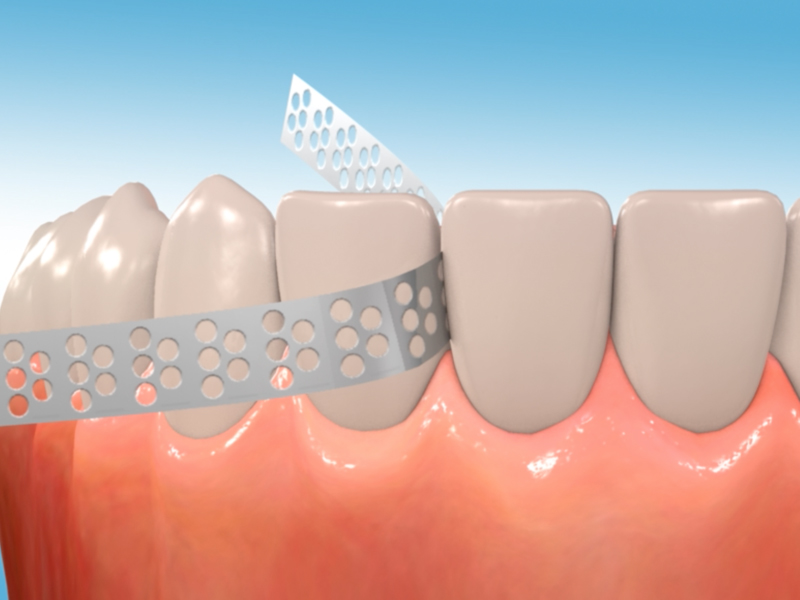
Interproximal Reduction (IPR)
Interproximal reduction (IPR) is the removal of small amounts of outer enamel tooth surface between two adjacent teeth. It is a means to acquire additional space to create ideal tooth alignment. Alternative names include: slenderizing, stripping, enamel reduction, and reproximation.
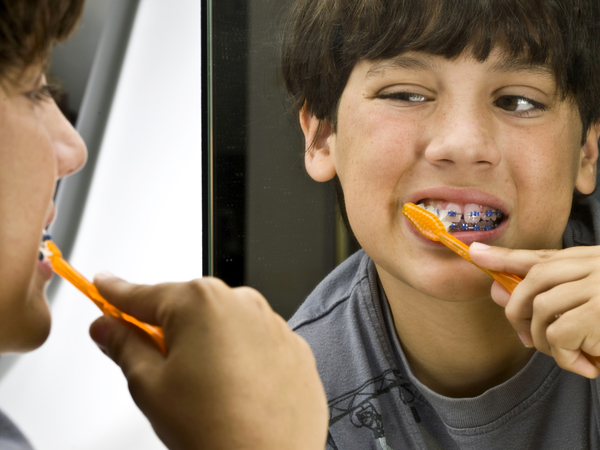
Oral Hygiene
Effective brushing and flossing is one of the most critical actions needed from patients during braces. Regular visits to the general dentist for examination and cleaning are also essential. The results of inadequate oral hygiene include decalcification (white spots/marks), gingivitis (inflammation of the gums), and periodontal disease (inflammation leading to bone loss).
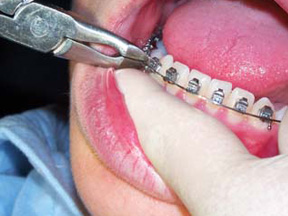
Orthodontic Adjustment
An evaluation of your progress where your wires may be changed to keep your treatment on track and moving forward.
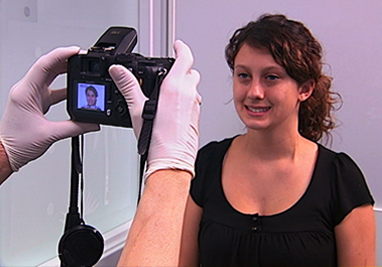
Orthodontic Photographs
Pictures taken upon the completion of treatment show the amazing changes that orthodontics have achieved in both growth and development of the teeth, jaws and aesthetics of the smile. The orthodontist uses the pictures throughout treatment to monitor changes.

Orthodontic Records
These records, which include cephalometric and panoramic x-rays, digital photos and study models, help your orthodontist determine what treatment needs to be done.
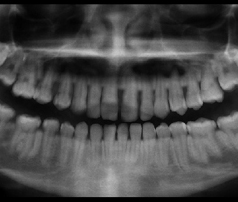
Panoramic X-ray
An X-ray taken by a machine that rotates around your head to give your orthodontist a picture of your teeth, jaws, and other important information.
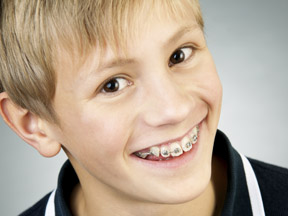
Two-Phase Treatment
Two phase orthodontic treatment is a very specialized process that encompasses tooth straightening and physical, facial changes. The major advantage of a two-phase treatment is to maximize the opportunity to accomplish the ideal healthy, functional, and aesthetic result that will remain stable throughout your life.

Wax
A clear wax used to prevent your braces from irritating your lips or cheeks when your braces are first put on, or as needed. Wax works best when the irritating area is dried well first and then, embedded totally within the pea-sized or grape-sized ball of wax.
Banding

The process of fitting and cementing orthodontic bands to your teeth.
Bonding

The process of attaching brackets to your teeth using a special safe adhesive.
Cephalometric X-ray

An x-ray of the head that shows if your teeth are aligned and growing properly within the jaws.
Consultation

A meeting with your orthodontist where your treatment plan is discussed.
Debonding

The process of removing cemented orthodontic brackets from your teeth.
Emergencies

Emergencies do not occur very often, but if they do, our team will respond quickly. An emergency only happens when someone is involved in an accident with their braces that has caused trauma to the tooth or tissue or if there is a noticeable amount of swelling of the lips or tongue.
Extractions

Extractions of impacted or problematic teeth to make space for orthodontic treatment.
Impressions

The first step in making a model of your teeth. A container filled with a rubber-type material is placed into the mouth around your teeth. The material hardens to produce a mold of your teeth.
Interceptive Treatment

Orthodontic treatment that is usually done between the ages of 7 and 10. The objective of interceptive or early orthodontic treatment is to provide orthopedic intervention, so that later orthodontic treatment is less complex.
Interproximal Reduction (IPR)

Interproximal reduction (IPR) is the removal of small amounts of outer enamel tooth surface between two adjacent teeth. It is a means to acquire additional space to create ideal tooth alignment. Alternative names include: slenderizing, stripping, enamel reduction, and reproximation.
Oral Hygiene

Effective brushing and flossing is one of the most critical actions needed from patients during braces. Regular visits to the general dentist for examination and cleaning are also essential. The results of inadequate oral hygiene include decalcification (white spots/marks), gingivitis (inflammation of the gums), and periodontal disease (inflammation leading to bone loss).
Orthodontic Adjustment

An evaluation of your progress where your wires may be changed to keep your treatment on track and moving forward.
Orthodontic Photographs

Pictures taken upon the completion of treatment show the amazing changes that orthodontics have achieved in both growth and development of the teeth, jaws and aesthetics of the smile. The orthodontist uses the pictures throughout treatment to monitor changes.
Orthodontic Records

These records, which include cephalometric and panoramic x-rays, digital photos and study models, help your orthodontist determine what treatment needs to be done.
Panoramic X-ray

An X-ray taken by a machine that rotates around your head to give your orthodontist a picture of your teeth, jaws, and other important information.
Two-Phase Treatment

Two phase orthodontic treatment is a very specialized process that encompasses tooth straightening and physical, facial changes. The major advantage of a two-phase treatment is to maximize the opportunity to accomplish the ideal healthy, functional, and aesthetic result that will remain stable throughout your life.
Wax

A clear wax used to prevent your braces from irritating your lips or cheeks when your braces are first put on, or as needed. Wax works best when the irritating area is dried well first and then, embedded totally within the pea-sized or grape-sized ball of wax.
Common Questions
Retention
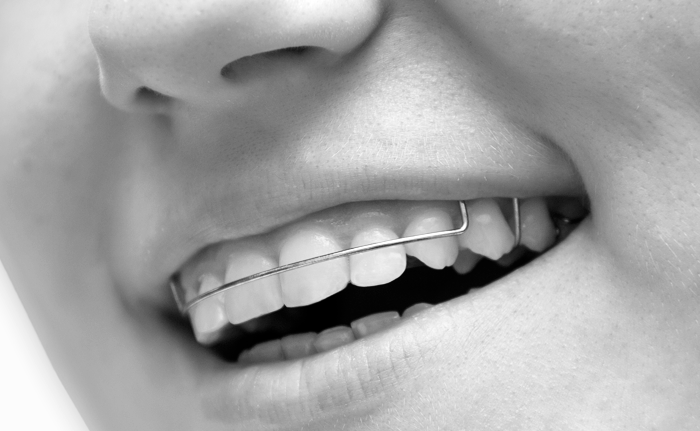
Once the active orthodontic appliances are removed, the patient will receive retainers to stabilize the dental correction. Because the bone and soft tissues surrounding the teeth are stabilizing for several months after braces are removed, it is imperative that the retainers are worn as instructed. Failure to wear the retainers may result in undesirable movement of the teeth, which could necessitate re-treatment.
Because teeth can continue to move throughout life, we feel that individuals who have undergone orthodontic therapy should wear retainers indefinitely. A patient should wear retainers as prescribed by our practice.
Retainers are made of a thermoplastic material that is sensitive to excessive heat, so they should be kept away from heaters, dishwashers, car dashboards or any place where the temperatures exceed 115 degrees(F). The retainers should be cleaned before and after placement in the mouth. Because the material used for fabrication is slightly porous, plaque tends to cling to the surfaces. Gentle scrubbing with a toothbrush and a mild liquid soap will remove the plaque. A denture cleaning solution, such as Efferdent, will aid in the removal of plaque and tartar. Be sure to rinse the retainers thoroughly after cleaning to remove any cleanser residue.
Our goal is to help your smile stay beautiful and healthy for a lifetime. Your cooperation is essential in order to achieve this goal.
Here Are A Few Things To Remember During The Years Of Retainer Wear
- Don't fold it in your napkin or leave it on the table at a restaurant. Garbage cans don't make happy hunting grounds.
- Don't put your retainer in your pocket. You might sit on it and break it.
- Take your retainer out when swimming in a lake or ocean. If it falls out you may not be able to find it. The same goes for a swimming pool depending on the size of the pool.
- Animals and younger children love to play with it. Please make sure your retainer is in your mouth at all times. Your retainer should only be out of your mouth when brushing or eating.
- Your lower retainer may be a fixed retainer bonded onto your teeth. It is not considered permanent and can be broken or detached from your teeth, if you are not careful with it.
- Bring your retainers to your check-up appointment. If anything happens to your retainers (i.e. it doesn't fit, it's broken, or it's lost) please call us ASAP. If your lower bonded retainer wire comes out, keep it and bring it in at your next appointment for rebonding.
- The first set of retainers is included in your treatment fee. Any repair, replacement of your retainer, or rebonding of your lower retainer will be additional and charged to your account.
- Keep things clean! Be sure to brush your teeth without your retainers in. Do not boil your retainer or put it in hot water. Brush your retainer with a toothbrush using toothpaste or water.
Orthodontic Hiccups
Even though you are careful, you may occasionally damage your appliances. We want our patients to be informed of problems that may occur, and understand how to solve them, at least temporarily, until it is possible to return to our office.
Loose band or bracket
While a tight band or bracket actually protects a tooth from decay, a loose band or bracket can cause decay to occur under it very rapidly. If a band or bracket comes loose from the tooth, call our office to schedule an appointment. If the band or bracket is still attached to a wire, leave it in place and apply wax if there is discomfort until you can be seen by our office. If the band or bracket comes completely out, place it in an envelope and bring it with you to your next appointment.
Broken archwire
If a main archwire breaks (the one that goes all the way around the outside of your braces), call our office for an appointment.
Loose wire
Try to place the wire back in the tube. Place wax over it if there is any discomfort and call for an appointment.
Poking wire
Sometimes a poking wire can be safely turned down so that it no longer causes you discomfort. Try to tuck the wire back in and out of the way with the blunt end of a toothbrush, or some other smooth object. If you are unable to take care of a poking wire, apply wax and call our office for an appointment.
Lost tie-wire or elastic tie
This is not a real emergency, but please notify an assistant at your next appointment.
Soreness
Soreness during treatment is to be expected. Warm salt-water rinses and Advil are helpful in relieving soreness.
Accidents involving teeth
Contact our office immediately, or contact your general dentist.
Please remember: If you are participating in contact sports, a regular mouth guard should be worn over your braces for added protection.

REFER A FRIEND
Thank you for trusting your smiles with us. Refer a Friend or family member and receive a sweet treat!
LEARN MORE

